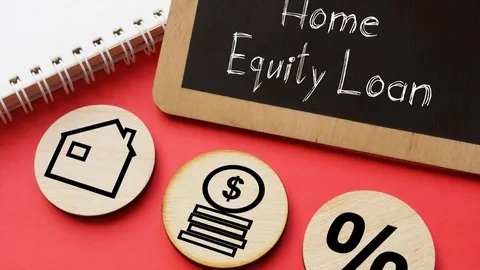“Before you borrow, make sure you truly understand the difference between flexibility and financial responsibility.”
What’s The Difference Between HELOC And Home Equity Loan?: When tapping into your home’s value, two of the most common financing options are a Home Equity Line of Credit (HELOC) and a Home Equity Loan. While both allow you to borrow against the equity you’ve built in your home, they serve different purposes and come with different features.
Understanding the distinction between the two can help you make a smarter financial decision—especially as more homeowners seek to fund renovations, consolidate debt, or cover education costs in 2025.
Home Equity Loan: Lump-Sum Stability
A home equity loan is a fixed-term loan where you borrow a lump sum against your home’s value. This loan offers:
- Fixed interest rates
- Predictable monthly payments
- A fixed repayment term, usually 5–30 years
According to Investopedia%2C%20generally%20have%20variable%20rates), the average home equity loan interest rate ranges from 6.5% to 8% in 2024–2025, depending on creditworthiness.

Best For: Large, one-time expenses like home improvements or medical bills.
Ujjivan SFB mentions that these loans are ideal for borrowers who prefer structure, stability, and know exactly how much they need.
HELOC: Flexible Access To Funds
A Home Equity Line of Credit (HELOC) functions more like a credit card. You’re approved for a credit limit based on your equity and can borrow as needed during a “draw period” (typically 5–10 years), with repayment often extending 10–20 more years.
Unlike home equity loans, HELOCs usually have variable interest rates. As AU Bank notes, HELOCs are more flexible—interest is charged only on the amount borrowed, not the full line of credit.
According to Investopedia, the average HELOC interest rate is about 8%–9%, but could vary based on market trends.
Best For: Ongoing expenses like tuition, phased renovations, or emergency access to funds.
HELOC Vs Home Equity Loan: Quick Comparison
| Feature | Home Equity Loan | HELOC |
| Payout | Lump sum | As needed (credit line) |
| Interest Rate | Fixed | Variable |
| Repayment Terms | Fixed monthly payments | Interest-only during draw period |
| Ideal For | One-time large expenses | Ongoing or uncertain expenses |
| Risk Level | Low (predictable) | Moderate (variable rate risks) |
| Interest Rates (2025 Avg) | 6.5%–8% | 8%–9% |
Conclusion
Both HELOCs and home equity loans offer powerful ways to access your home’s equity—but your choice depends on how and when you need the funds. While home equity loans give you stability and fixed terms, HELOCs offer adaptability and ongoing access.
In 2025, as property values rise and financial needs evolve, understanding the difference between these tools will help you make an informed, secure borrowing decision. Use your equity wisely—it’s one of your most valuable financial assets.
FAQs
What Is The Main Difference Between HELOC And Home Equity Loan?
HELOC is a revolving credit line with variable rates, while a home equity loan is a lump-sum loan with fixed payments.
Which Option Is Better For Home Renovation?
If renovations are phased over time, HELOC offers more flexibility. For one-time projects, a home equity loan is ideal.
Can I Have Both A HELOC And A Home Equity Loan?
Yes, if your home equity allows it. Some homeowners use both to separate expenses or diversify borrowing terms.
Do HELOCs Have Closing Costs?
Yes, just like home equity loans. These may include application fees, appraisal fees, and closing costs of 2.
Does A HELOC Affect My Credit Score?
Yes. Like other credit lines, HELOCs impact your credit utilization ratio and payment history.
Is Interest On HELOC Tax-Deductible?
Interest may be deductible if the loan is used to “buy, build, or substantially improve” your home, as per IRS guidelines.
What Happens If I Default On A Home Equity Loan?
Since both HELOCs and home equity loans use your home as collateral, defaulting can result in foreclosure.

